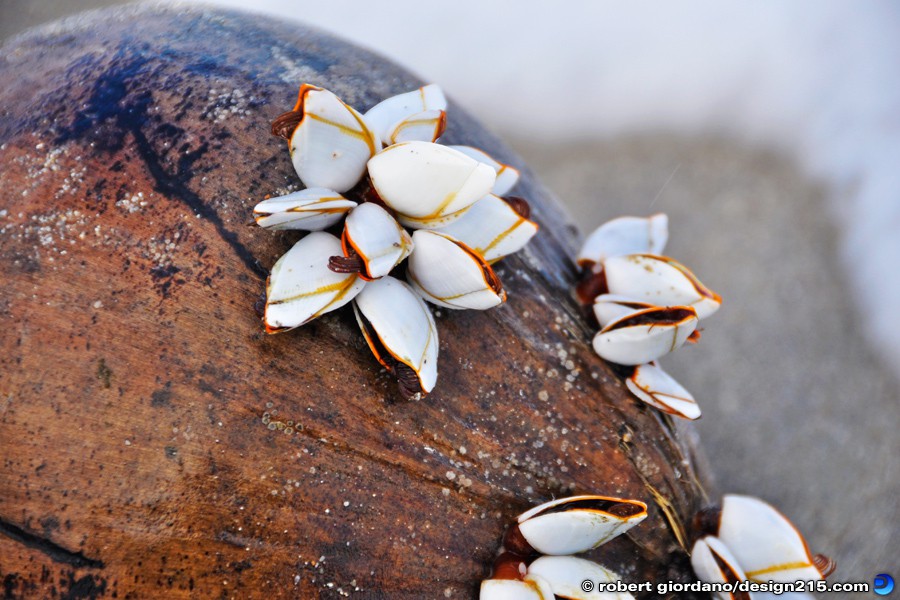

Living barnacles on a coconut that has just washed ashore. Barnacles are encrusters, attaching themselves permanently to a hard substrate. The most common, "acorn barnacles" (Sessilia), are sessile, growing their shells directly onto the substrate. The order Pedunculata ("goose barnacles" and others) attach themselves by means of a stalk.
Free-living barnacles are attached to the substratum by cement glands that form the base of the first pair of antennae; in effect, the animal is fixed upside down by means of its forehead. In some barnacles, the cement glands are fixed to a long muscular stalk, but in most they are part of a flat membrane or calcified plate. Their calcite shells are impermeable, and they possess two plates which they can slide across their aperture when not feeding. These plates also protect against predation.
Barnacles have no true heart, although a sinus close to the oesophagus performs similar function, with blood being pumped through it by a series of muscles. The blood vascular system is minimal. Similarly, they have no gills, absorbing oxygen from the water through their limbs and the inner membrane of the carapace. Photo Copyright 2009 Robert Giordano
Description from Wikipedia
Return to Category Thumbnails | All Categories